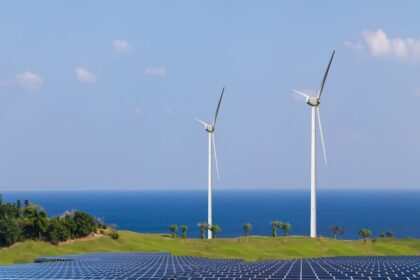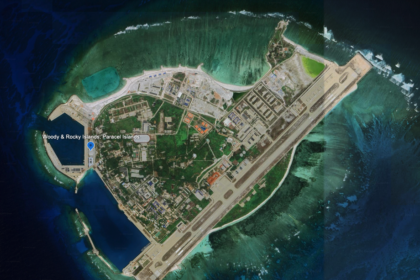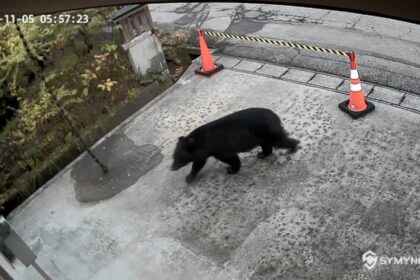La Nina watch rises for fall in Korea
South Korea’s weather agency says the Pacific is edging toward a La Nina phase that could reshape the nation’s fall weather. The Korea Meteorological Administration (KMA), citing the World Meteorological Organization (WMO), places the chance of La Nina developing at 55 percent for September to November and 60 percent for October to December. Neutral conditions still remain possible, at 45 percent and 40 percent respectively, according to the WMO. KMA’s in house models align with that shift, estimating a 54 percent likelihood for September, rising to 68 percent in October and easing to 57 percent in November. That rising signal matters because La Nina can tilt Korean fall weather toward warmer conditions at first, more frequent rain in early fall, then a quicker arrival of dry air and early cold snaps by November.
- La Nina watch rises for fall in Korea
- What La Nina means for Korea’s weather pattern
- Rain now, dry later across September to November
- Will typhoon tracks shift toward Korea
- How strong could the signal be
- Climate change is reshaping local effects
- Risks and readiness in South Korea
- Multiple climate drivers can bend the forecast
- Key Points
La Nina describes a recurring climate pattern in which sea surface temperatures across the central and eastern equatorial Pacific fall at least 0.5 degrees Celsius below the long term average, and remain there long enough to influence the atmosphere. Recent observations the KMA tracks, including cooler conditions in the eastern Pacific, warmer waters in the west, and stronger easterly winds about 1.5 kilometers above the western Pacific, match a developing La Nina setup. Those ocean and wind changes often shift rain and heat across the Pacific Basin, then alter where high pressure builds and where moisture flows, including into East Asia.
The KMA cautions that other climate drivers can sometimes overwhelm a La Nina signal. Sea surface temperature patterns in the Indian and Atlantic oceans, plus changes in the Arctic, have recently helped produce exceptions. In several years, parts of November in Korea have turned out warmer or wetter than expected during a La Nina watch. The agency plans continuous joint monitoring with the WMO throughout fall to track how ocean and atmosphere conditions evolve.
What La Nina means for Korea’s weather pattern
La Nina is the cool phase of the El Nino Southern Oscillation (ENSO). During La Nina, strengthened trade winds push warm surface waters westward and bring cooler, nutrient rich waters to the surface in the eastern and central equatorial Pacific. The Walker circulation intensifies, rainfall increases near the Maritime Continent, and cloudiness and rain decrease over the central and eastern Pacific. These shifts change the position and strength of major high and low pressure systems across the Pacific, which then influences storm tracks and moisture supply to East Asia.
For Korea, a common La Nina pattern in early fall is less rain over the North Pacific and more robust, large scale high pressure there. That setup encourages hot and humid southerly winds to reach the peninsula more often, which can deliver bursts of heavy rain. This moisture pipeline is often most active in September and early October. When the western North Pacific subtropical high shifts position later in fall, the moisture supply can fade and colder continental air masses can arrive sooner, setting the stage for early season cold snaps.
Because the Pacific ocean response leads the atmosphere by weeks to months, the strongest La Nina impacts often appear after the sea surface temperature signal is already in place. That timing is important for planning around rainfall, landslide risk, and the first meaningful cold spells.
Rain now, dry later across September to November
The KMA expects a seasonal flip this fall. Warmer than usual conditions are favored in September and October, with a higher frequency of rain events compared with the long term average, then a turn toward drier and colder conditions in November. The result could be a fall that starts with unseasonable warmth and repeated wet spells before moving quickly toward crisp, chilly weather, perhaps earlier than typical.
Month by month guidance
September: Warmer than usual temperatures are likely, paired with an uptick in rainfall days. Southerly flow can funnel moisture into frontal systems over the peninsula. Any passing tropical cyclone remnants would amplify the rain risk. Urban flash flooding and landslides become more likely when short duration rain is intense.
October: Temperatures may still lean above the long term average at times, but the calendar brings an increasing chance of sharp temperature swings. Wet episodes can still occur when the subtropical high briefly strengthens or a storm taps subtropical moisture. Cooler, drier shots of air may begin to punctuate the pattern, adding volatility to day to day forecasts.
November: The pattern often flips. KMA guidance points to a tendency toward drier conditions with a quicker arrival of colder air. Early cold snaps can catch agriculture, construction, and energy systems off guard if plans still assume a slow slide into winter. Heating demand can spike earlier than usual.
Will typhoon tracks shift toward Korea
KMA notes that La Nina can alter western North Pacific typhoon paths in early fall. Small changes in the position of the subtropical high can nudge tropical cyclones to recurve toward the Korean Peninsula or track nearer to the East China Sea and the Sea of Japan. Even storms that do not make landfall can push deep tropical moisture into frontal systems over Korea, turning a routine rain event into a waterlogged day with flash flood risk.
Peer reviewed research points to another piece of the puzzle. A 2025 study in the Nature portfolio highlights that Atlantic Nino conditions in early summer shift cyclone formation northward in the western North Pacific, which increases the risk of landfalls in far eastern Asia, including Korea and Japan. That same research shows that when Atlantic Nino or Nina lines up with the Pacific ENSO phase, the combined effect can amplify or mute cyclone activity by changing where storms form and how they track. While the strongest Atlantic influence appears earlier in the season, the message is consistent with KMA’s caution. Storm tracks depend on a mix of global and regional factors, not a single index.
What research says about storm tracks
During La Nina episodes, the western North Pacific subtropical high often extends farther west. That favors genesis closer to the Philippines and the South China Sea and can lead to tracks that aim west or bend north then recurve. For Korea, the practical takeaway is not a guarantee of more landfalls, but a greater need to watch the steering currents. A recurving typhoon that passes to the west or south can still sling moisture into Korea and set up a damaging rain day as it merges with a mid latitude front.
How strong could the signal be
As of mid August, the International Research Institute for Climate and Society (IRI) reports ENSO neutral conditions, with sea surface temperatures in the NiNo 3.4 region near the long term average. The IRI model plume favors neutral in August to October, and shows rising odds for La Nina during September to November and October to December, near 39 to 44 percent. Those probabilities are lower than the WMO’s headline, which reflects a different blend of dynamical and statistical models. Forecast differences are common because groups weigh models differently and update at different times.
An official La Nina classification usually requires sea surface temperatures of at least 0.5 degrees Celsius below average in the central equatorial Pacific for five consecutive overlapping three month periods, paired with atmospheric signals such as stronger trade winds and a characteristic pattern of tropical thunderstorms. Forecasters also watch whether rainfall and wind anomalies line up with the ocean cooling. That alignment, known as coupling, is key to stronger seasonal effects.
Michelle L’Heureux, a scientist with the Climate Prediction Center, told Newsweek that precipitation outlooks respond strongly once ENSO fully emerges.
“For precipitation in particular, the main driver usually is La Nina or El Nino when they are occurring.”
This fall’s outlook would then hinge on whether the cooling pacific signal strengthens and stays aligned with the atmosphere long enough to affect Korea’s storm track and rainfall timing.
Climate change is reshaping local effects
La Nina historically brings wetter and somewhat cooler conditions to parts of Southeast Asia and Australia. Recent years show how that textbook picture is getting complicated by a warmer climate. Singapore’s weather service, for example, announced a La Nina in early February and warned that any cooling there would be muted by long term warming. Heat now stacks on top of background warming even when a natural cycle might nudge temperatures downward. Across the Northern Hemisphere, 2025 featured exceptional heat early in the warm season, and Korea saw heat alerts during peak summer. A warmer baseline can also intensify rain events by allowing the air to hold more moisture.
Another complication is timing. The Earth System Science Interdisciplinary Center (ESSIC) at the University of Maryland reported that in March 2025, even as Pacific sea surface temperature anomalies were weakening, the rainfall pattern still resembled a La Nina setup. A broad negative rainfall anomaly zone stretched from South Asia through eastern China to the Korean Peninsula, where dry conditions helped set up wildfires. That lag between sea surface temperature changes and the rainfall response demonstrates why forecasters weigh both the ocean and the atmosphere when they assess what comes next.
Why the lag between ocean and rainfall matters
Sea surface temperatures change more gradually than day to day weather. The tropical atmosphere often responds to those ocean changes in a stepwise way, with convection and wind patterns shifting over weeks. In practice, that means Korea can feel a La Nina like rainfall pattern even as the central Pacific briefly warms, or see the rainfall pattern flip after the sea cools. Decision makers should consider that the timing of heavy rain or a dry spell may not precisely match the ocean metrics.
Risks and readiness in South Korea
La Nina’s early fall pattern can load the dice for more frequent heavy rain events in September and October. That combination of warmth and moisture raises the chance of sudden downpours that overwhelm drains, trigger urban flash floods, and saturate hillsides. If a tropical system interacts with a stalled front, totals can jump in a matter of hours. By November, a faster drop in temperatures and drier air can stress crops and increase heating demand sooner than expected. Cold snaps that arrive early can catch late harvests, construction schedules, and energy planning off balance.
Practical steps to reduce exposure
- Inspect and clear urban drainage, culverts, and pump stations ahead of the peak rain window in September and early October.
- Review reservoir operations to allow safe pre releases before heavy rain, and coordinate with upstream flood control to reduce peak flows.
- Survey slopes, rail corridors, and road cuts in landslide prone areas, and stage rapid response crews and equipment.
- Stress test power supply and grid maintenance plans to handle both wet weather outages and an earlier jump in heating demand.
- Advise farmers on flexible harvest timing, field drainage, and frost protection for November cold snaps.
- Advance public messaging on flash flood safety, landslide awareness, and typhoon season readiness, including route diversions and shelter information.
- Encourage businesses to refresh continuity plans for both waterlogging risk in early fall and cold related disruptions later in the season.
Agencies and communities already work from seasonal guidance. With higher odds for an early fall wet phase and an earlier dry and cold turn, the focus shifts to timing and rapid changes rather than a single month’s average.
Multiple climate drivers can bend the forecast
La Nina is not the only player. Temperature patterns in the Indian Ocean can push or pull the subtropical jet, affecting East Asian rainfall. The Atlantic can matter too. The 2025 Nature study on Atlantic Nino shows early season shifts in cyclone formation that raise landfall risk in Korea and Japan when the Atlantic and Pacific signals align. Polar influences are also in the mix. Research on the Mei yu region, which includes South Korea, finds that a decline in Barents Sea ice in late winter, combined with a La Nina like sea temperature pattern in spring, can help set up compound hot drought events in early summer by altering the jet stream. These kinds of remote connections, known as teleconnections, help explain why Korea sometimes experiences warm or wet Novembers even when La Nina is present in the Pacific.
Given the blend of drivers, seasonal outlooks are best seen as risk guidance rather than fixed forecasts. KMA’s dedicated ENSO and long range pages provide updated model charts and explanations as the season evolves. For official KMA ENSO products, visit its El Nino and La Nina portal at kma.go.kr. For the international model consensus, IRI’s monthly ENSO Quick Look is available at iri.columbia.edu. Keeping an eye on both sources helps track whether the Pacific cooling accelerates, stalls, or couples more strongly with the atmosphere as fall progresses.
Key Points
- WMO places the chance of La Nina at 55 percent for September to November and 60 percent for October to December, while neutral conditions remain possible.
- KMA’s models estimate a 54 percent chance in September, 68 percent in October, and 57 percent in November.
- La Nina can bring warmer and wetter conditions to Korea in September and October, then a quicker turn to drier and colder conditions by November.
- KMA warns that typhoon paths in early fall can shift, increasing flood risk if storms recurve near the peninsula.
- IRI reports ENSO neutral as of August with a 39 to 44 percent chance of La Nina during the main fall periods, showing model differences across forecasting groups.
- Other drivers, including Atlantic and Indian Ocean patterns and Arctic variability, can modify outcomes, and have produced warm or wet Novembers in recent years.
- A warmer climate raises the baseline for heat and moisture, which can intensify heavy rain even during a La Nina setup.
- Early fall planning should focus on drainage, landslide watch, reservoir management, and typhoon readiness, followed by preparations for early cold spells.
- Track updates from KMA and the WMO as the Pacific cooling and atmospheric coupling evolve through fall.












